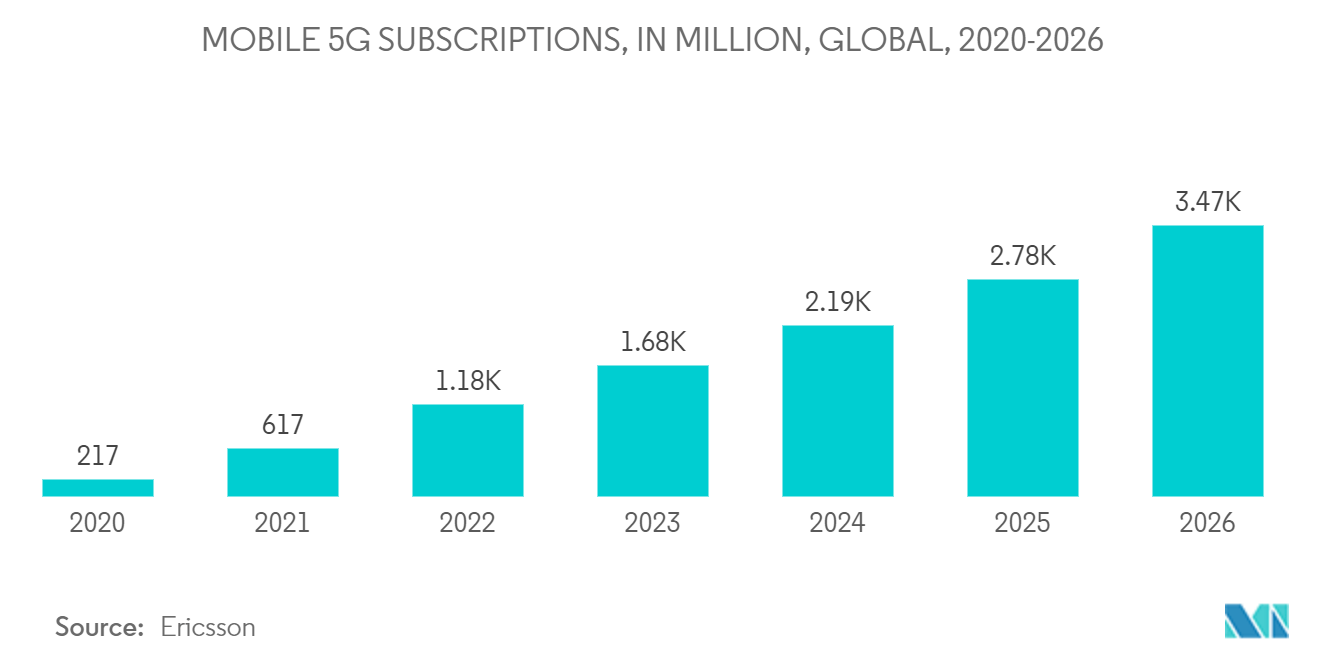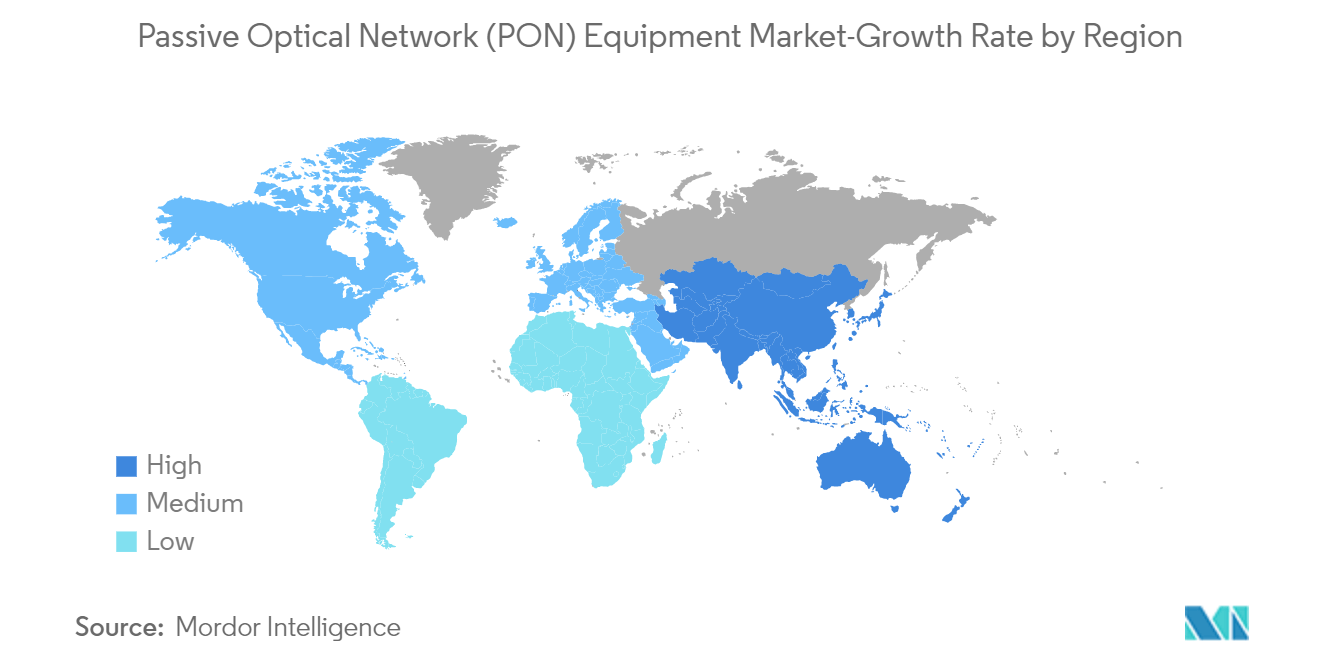Market Trends of Passive Optical Network (PON) Equipment Industry
This section covers the major market trends shaping the Passive Optical Network (PON) Equipment Market according to our research experts:
GPON Equipments is Expected to Grow Significantly
- Enhanced mobile broadband (eMBB) provides greater data bandwidth due to latency improvements on 5G NR and 4G LTE. It led most operators towards new use cases for 5G by delivering mobile broadband services directly to customers. It, thus, complements ample capacity for digital services, owing to better spectral efficiency, power, and increasing smartphone data usage in developed & developing countries.
- Recently, VIAVI Solutions Inc., a test, measurement, assurance solutions, and advanced precision optical solutions provider, announced Fusion JMEP 10, a small form-factor pluggable (SFP+) Gigabit Ethernet transceiver for network test, turn-up, and performance monitoring up to 10 GbE. The Fusion JMEP 10, which is part of the VIAVI NITRO lifecycle management platform, addresses10 GbE emergence as the dominant Ethernet bandwidth for applications such as 5G xHaul, Business Ethernet Services, Distributed Access Architecture (DAA) for Cable and Gigabit Passive Optical Networks (GPON/XGSPON) for Fiber Access Networks.
- The compatibility of 5G and fiber results in a reciprocal partnership. In areas where connecting fiber to the home is challenging, expensive, or takes too long, 5G fixed wireless access can fill in the gaps in FTTH deployments and expand coverage. Customers leave the cellular network for Wi-Fi, offloading 5G traffic to Wi-Fi and FTTH. It facilitates managing RAN capacity and prices effectively, freeing up 5G capacity for mission-critical applications and improving the customer experience at home. Users of mobile devices anticipate substantially faster speeds and global coverage from 5G, which requires a high-performance mobile transport network. Further, to offer that transport, a passive optical network (PON) technology-based FTTH networks already in existence are used.
- With the accelerating rollout of GPON worldwide, telecom operators are also actively moving toward the next step in fiber rollouts. The Gigabyte era will rapidly enter optical access networks during the next five years. The 10G PON passive optical network technology is distinguished by its broad coverage and high bandwidth. When installing high-speed optical access networks, operators around the world favor this technology since it can give Gigabyte access to 30-40 households on a single system.

Asia-Pacific Region to Witness the Fastest Growth
- Recently, there is an increased emphasis on high-speed internet and 5G network. The major driving countries in the region for the same are emerging countries, including China, Japan, Taiwan, India, and Australia. China includes an established ecosystem for 5G and is expected to grow further in the forecast period. However, the 5G technology is expected to serve as a hotspot technology with the current mobile broadband; the growth is expected to be gradual.
- China is advancing towards a new Gigabit ultra-wide stage, represented by 10G PON technology, and leading the global in terms of optical networks' fundamental advantages. Primary telecom providers effectively put up concise development plans for a gigabit optical network. Over 300 cities nationwide had a gigabit broadband access network in 2021, serving more than 80 million households. More than 2.7 million National Gigabit internet access consumers have received gigabit commercial packages from most provincial telecommunications providers. The number of new users surpassed the total number from the previous year in just five months.
- In addition to building hundreds of double Gigabyte boutique communities throughout the city, Beijing Mobile will hasten the construction of F5G. The first FTTR White Paper, published by Guangzhou Telecom and Huawei, ensures Gigabit broadband full house coverage through an all-optical residential network technology. To strengthen the firm foundation of the digital economy, Hangzhou Mobile published the "Double 5G" Digital City White Paper. China's Gigabit Broadband will continue to broaden its coverage to connect many devices and terminals, achieve multi-scenario applications such as home, enterprise, business, and industrial manufacturing, and give consumers reliable, high-speed bandwidth access capacity.
- Chinese telecom companies have invested more than USD 59.4 billion in 5G, generating more than USD 59.4 billion in 5G, generating an estimated USD 1.25 trillion in economic output. It shows the significant contribution new network infrastructure makes to economic growth. The commercial use of 5G entered a positive feedback loop, according to Xiang Libin, vice-minister of science and technology, and noted that after more than three years of development, industry-oriented 5G applications have increased from zero to one. These factors are analyzed to contribute to the market growth rate during the forecast period.

